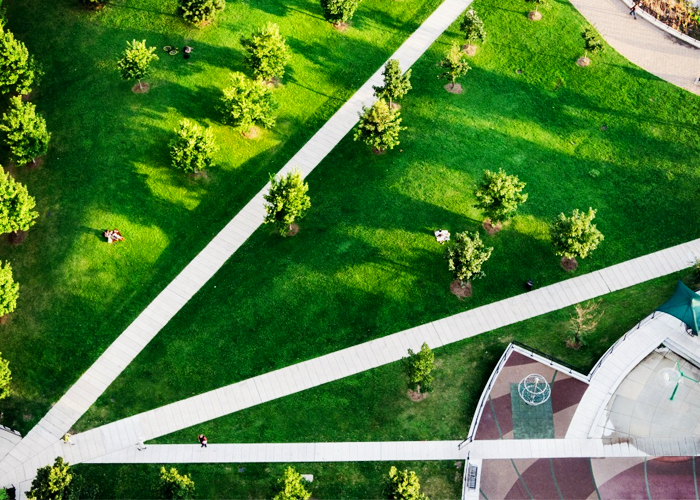Insulated Buildings and Cooler Streets to Solve Adelaide's Climate Change Dilemma The fifth-largest Australian capital city, Adelaide is home to more than 1.3 million residents and is a hotspot for over 4 million international visitors every year. As much as it positively impacts economic growth, the increasing level of residential and tourism both contribute to the worsening state of climate change. It consists of an increased carbon emissions from air, soil, and transport systems, plus a growing use of cheap, degrading heaters or coolers, and, the most pressing issue, the rise of non-environmentally construction plans. The change in biodiversity is a big threat to both the community and its guests. The city is already experiencing a negative impact with the amount of summer days reaching over 40°C doubling over the past few years, and the sea level has risen by 1.5-4mm. The increasing population density is not entirely at fault, but also the inadequate policies in place and lack of shared knowledge about sustainable development. With the hope of solving Adelaide's climate change dilemma, local government and companies are teaming up to map out sustainable trends and alternatives. Two of the most considered solutions are the development of more insulated buildings, and cooler streets. Insulated Building Communities have long been dependent on heating and cooling systems to cope up with extreme temperatures. It is no longer a secret that these systems produce most of the harmful gases found in the environment, yet people still rely on them for convenience and lack of knowledge regarding more practical alternatives. Insulation is the most cost-efficient and sustainable way to reduce dependency on air conditioning. Not only does it help the environment but it also reduces electricity, gas, and petroleum consumption, enabling for bigger energy savings in the long run. Insulation materials like foams, fibreglass, cellulose, rock wool, and polystyrene have already surfaced on the market, conveniently offered at affordable prices. They slow down heat entering homes during summer and inhibits heat-loss during winter. Unlike common heating and cooling systems, insulation materials are environmentally compliant and readily available for easy install. Last but not least, it is viable to thermally insulate a building by installing double to triple-glazed windows, or integrating heat-reflective coatings into walls, ceilings and roofs. Cooler Streets In addition to keeping building interiors naturally warm or cool, city planners are also looking for ways to make Adelaide's streets and roads cooler and sustainable. New methods must be considered when maximising outdoor space and the addition of more trees in existing streetscapes for natural shade and cool. The use of light-coloured materials when replacing black finishes and asphalt is also a feasible solution as they better reflect sunlight. Never underestimate the small initiatives; if pursued by thousands, they will have an enormous effect on people and their environment. Adelaide government and companies also consider the sustainable initiatives of other states and countries to address the same dilemmas. For instance, New York City has seen thousands of volunteers paint their roofs with reflective materials like polymer. Los Angeles, on the other hand, pledged to decrease their city's temperature in the next decade by painting their roads white. Toronto and Swiss cities have stepped up by mandating green roofs and vegetated roof systems for new developments. Stay in touch with DesignBUILD to know more about how you can contribute in solving Adelaide's climate change dilemma. Visit www.designbuildexpo.com.au today.
|
02 9275 9200
|


 DesignBUILD 2020 Postponed Until October
DesignBUILD 2020 Postponed Until October Planning your Kitchen Renovation:
Planning your Kitchen Renovation: DesignBUILD 2020: A Focus on the Latest
DesignBUILD 2020: A Focus on the Latest Prefabricated Construction at
Prefabricated Construction at Architectural Excellence with Interior
Architectural Excellence with Interior 3D FDM Printing: What are the Important
3D FDM Printing: What are the Important How Construction Software is Changing
How Construction Software is Changing DesignBUILD 2019: Commercial Platform
DesignBUILD 2019: Commercial Platform Evolution of Smart Cities at DesignBUILD
Evolution of Smart Cities at DesignBUILD DesignBUILD 2019: Speaker Series
DesignBUILD 2019: Speaker Series What's on at DesignBUILD 2019?
What's on at DesignBUILD 2019? The Rise of Engineered Timber Buildings
The Rise of Engineered Timber Buildings Stay Relevant: How to Handle Rapid
Stay Relevant: How to Handle Rapid Trending Lower: Australian Building
Trending Lower: Australian Building Sustainable Architecture: How to Build a
Sustainable Architecture: How to Build a Innovative Building Ideas from the
Innovative Building Ideas from the Global Building and Construction
Global Building and Construction Key Drivers of Prefab and Smart Modular
Key Drivers of Prefab and Smart Modular 3D Printing Sustainable Construction
3D Printing Sustainable Construction Sustainable Water Storage: Preparing for
Sustainable Water Storage: Preparing for
